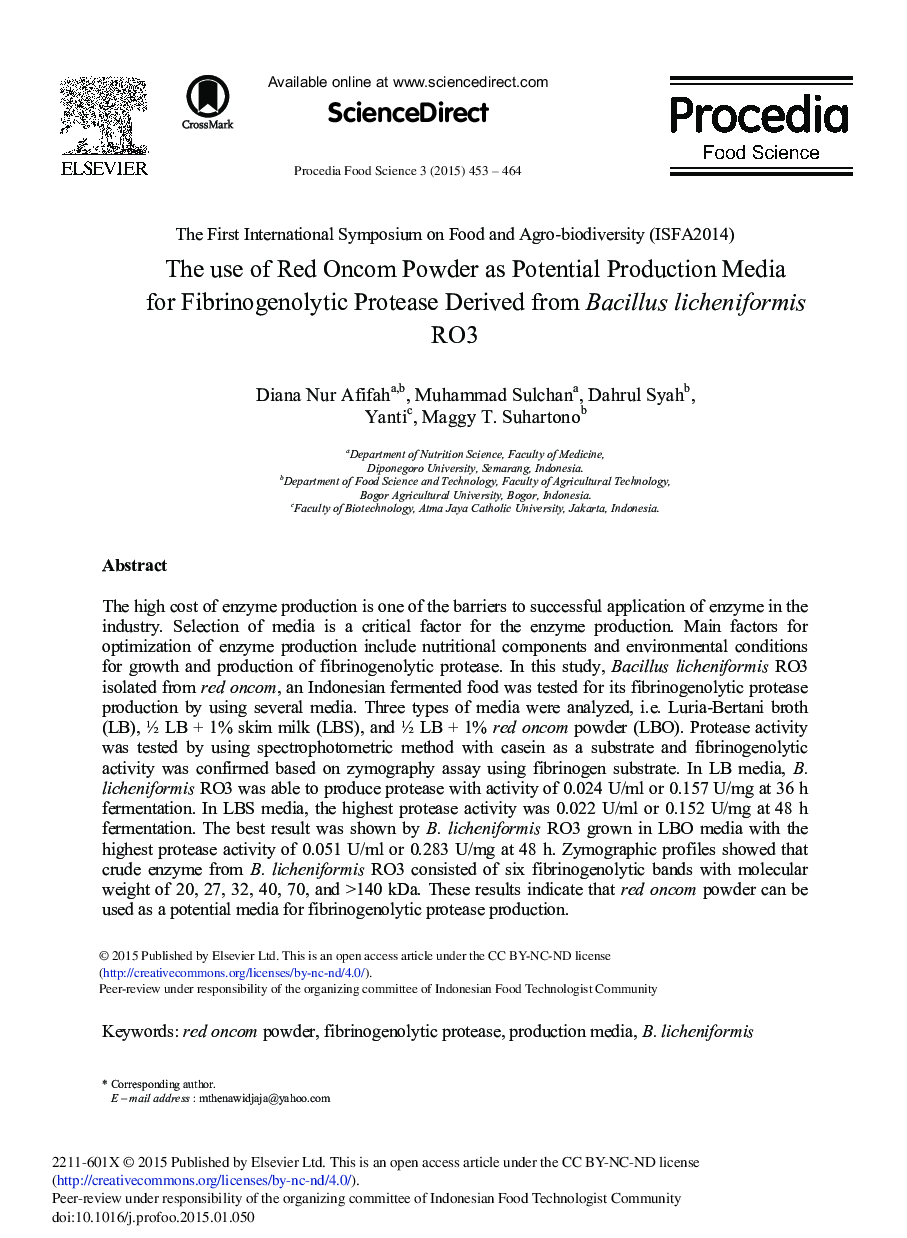| کد مقاله | کد نشریه | سال انتشار | مقاله انگلیسی | نسخه تمام متن |
|---|---|---|---|---|
| 1266482 | 1496853 | 2015 | 12 صفحه PDF | دانلود رایگان |

The high cost of enzyme production is one of the barriers to successful application of enzyme in the industry. Selection of media is a critical factor for the enzyme production. Main factors for optimization of enzyme production include nutritional components and environmental conditions for growth and production of fibrinogenolytic protease. In this study, Bacillus licheniformis RO3 isolated from red oncom, an Indonesian fermented food was tested for its fibrinogenolytic protease production by using several media. Three types of media were analyzed, i.e. Luria-Bertani broth (LB), ½ LB + 1% skim milk (LBS), and ½ LB + 1% red oncom powder (LBO). Protease activity was tested by using spectrophotometric method with casein as a substrate and fibrinogenolytic activity was confirmed based on zymography assay using fibrinogen substrate. In LB media, B. licheniformis RO3 was able to produce protease with activity of 0.024 U/ml or 0.157 U/mg at 36 h fermentation. In LBS media, the highest protease activity was 0.022 U/ml or 0.152 U/mg at 48 h fermentation. The best result was shown by B. licheniformis RO3 grown in LBO media with the highest protease activity of 0.051 U/ml or 0.283 U/mg at 48 h. Zymographic profiles showed that crude enzyme from B. licheniformis RO3 consisted of six fibrinogenolytic bands with molecular weight of 20, 27, 32, 40, 70, and >140 kDa. These results indicate that red oncom powder can be used as a potential media for fibrinogenolytic protease production.
Journal: Procedia Food Science - Volume 3, 2015, Pages 453-464